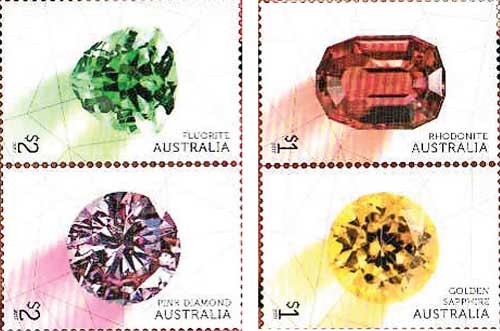Thursday Apr 03, 2025
Thursday Apr 03, 2025
Saturday, 22 April 2017 00:00 - - {{hitsCtrl.values.hits}}
While Sri Lanka boasts of its wide variety of gems, most other countries display gemstones in their museums. Australia, for instance, has such a collection.
Throughout human history gemstones have been valued and used for personal adornment and ritual practice. Gemstones are objects cherished for their intrinsic beauty and are valued as symbols of wealth and status. Over the ages, the cutting of gemstones has evolved from a limited practice into a complex art that uses sophisticated technology to reveal a mineral’s hidden beauty.
Minerals must have hardness (resistance to scratches and general wear) in order to be transformed into gemstones. While the  hardness is measured on the MOH’s scale – a scale created in 1812 by German geologist and mineralogist Freidrich Mohs – beauty is defined by colour, clarity and lustre. Rarity is another feature that increases the value of a gemstone. Some minerals that are too soft or fragile for wearing as jewellery are faceted into “collector stones”, in which the art of the expert cutter overcomes the constraints of the mineral to present the stones as aesthetic objects for collectors. Recently the Australian Post released four stamps on the theme ‘Rare Beauties’ featuring some of the natural gemstones housed in the Australian Museum in Sydney.
hardness is measured on the MOH’s scale – a scale created in 1812 by German geologist and mineralogist Freidrich Mohs – beauty is defined by colour, clarity and lustre. Rarity is another feature that increases the value of a gemstone. Some minerals that are too soft or fragile for wearing as jewellery are faceted into “collector stones”, in which the art of the expert cutter overcomes the constraints of the mineral to present the stones as aesthetic objects for collectors. Recently the Australian Post released four stamps on the theme ‘Rare Beauties’ featuring some of the natural gemstones housed in the Australian Museum in Sydney.
Two of them – the Golden Sapphire ($1) and the Pink Diamond ($2) – represent precious gemstones that are cut and polished and used as centrepieces for exquisite jewellery.
The other two – the Rhodonite ($1) and the Fluorite ($2) – represent stones that are valued as collector stones. They are rarities transformed by lapidaries into singular specimens for the pleasure of gem specialists.
In addition to the first day covers, stamp packs, mini sheets and maxi-sheets, special medallion covers were released at the 2017 Melbourne International Stamp Exhibition.
Discover Kapruka, the leading online shopping platform in Sri Lanka, where you can conveniently send Gifts and Flowers to your loved ones for any event including Valentine ’s Day. Explore a wide range of popular Shopping Categories on Kapruka, including Toys, Groceries, Electronics, Birthday Cakes, Fruits, Chocolates, Flower Bouquets, Clothing, Watches, Lingerie, Gift Sets and Jewellery. Also if you’re interested in selling with Kapruka, Partner Central by Kapruka is the best solution to start with. Moreover, through Kapruka Global Shop, you can also enjoy the convenience of purchasing products from renowned platforms like Amazon and eBay and have them delivered to Sri Lanka.
Discover Kapruka, the leading online shopping platform in Sri Lanka, where you can conveniently send Gifts and Flowers to your loved ones for any event including Valentine ’s Day. Explore a wide range of popular Shopping Categories on Kapruka, including Toys, Groceries, Electronics, Birthday Cakes, Fruits, Chocolates, Flower Bouquets, Clothing, Watches, Lingerie, Gift Sets and Jewellery. Also if you’re interested in selling with Kapruka, Partner Central by Kapruka is the best solution to start with. Moreover, through Kapruka Global Shop, you can also enjoy the convenience of purchasing products from renowned platforms like Amazon and eBay and have them delivered to Sri Lanka.